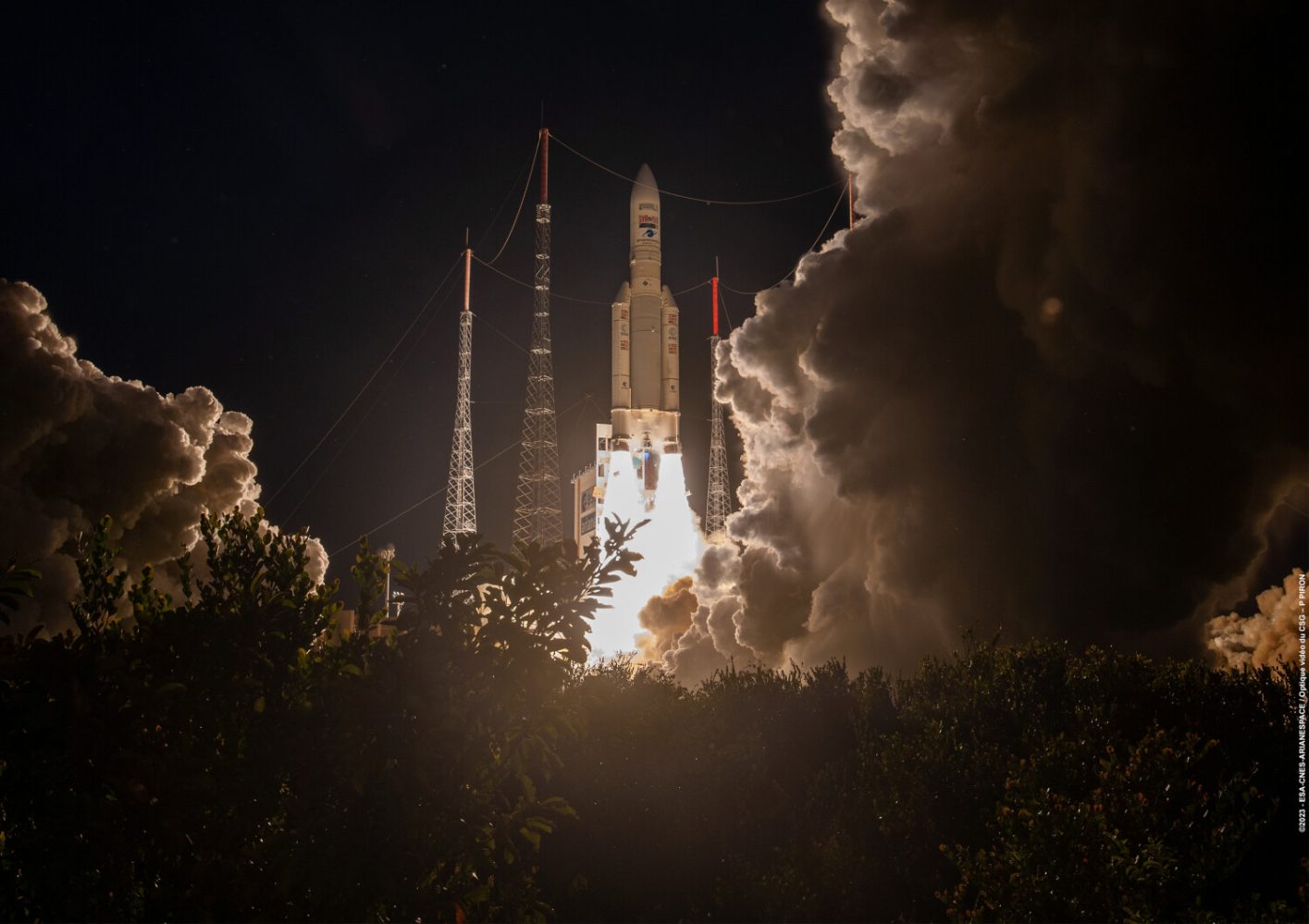
The end of an era is just around the corner with the final launch of Ariane 5, a heavy-lift launch that has delivered the most revered of payloads to a range of orbits. Famously, Ariane 5 launched the James Webb Space Telescope on Christmas Day in 2021. The 117th flight has been delayed, extending the rocket’s final moments on Earth.
Pyrotechnic systems, such as those used in the staging of the rocket during flight, were, when X-rayed, did not make teams confident in their ability to function. More specifically, the two “distancing” system pyrotechnic lines and one of the lines used to separate one of the solid rocket boosters.
Arianespace then proceeded to conduct tests on lines with similar characteristics to ensure that the redundancies worked. These tests proved unsuccessful, resulting in the three lines on the vehicle needing replacement.
Although teams have not yet made public a new launch date, it is expected that this delay lasts at least a couple of weeks. Not only will Arianespace want their last launch of the Ariane 5 to be a success, they also want to fulfill their duties of providing a safe and comfortable ride to space.
If this launch is successful, it will complete the nearly 100% success rate of the Ariane 5 since 2003. Only one partial failure occurred in 2018 when telemetry was lost nine minutes and 30 seconds into flight. The payloads were delivered into incorrect orbits but were able to recover.
Join our Discord Server: Join the community with forums and chatrooms about space!
Payloads on VA261
For the final launch of the Ariane 5, the rocket will utilize the Système de Lancement Double Ariane (SYLDA) adapter. The adapter covers the lower satellite as it supports the higher satellite. When the time comes for satellite deployment, the top satellite is released first, the SYLDA is then jettisoned, and the bottom satellite is released last.

The two payloads on VA261 is the Heinrich-Herz-Satellit for the German Space Agency and the SYRACUSE 4B satellite for the French Aranment General Directorate (DGA). Both of which will be sent to a Geostationary Transfer Orbit.
The Heinrich-Herz-Satellit will be the first dedicated telecommunications satellite for Germany and will be used to test new technologies. SYRACUSE 4B, along with its partner satellite SYRACUSE 4A, will provide secure and reliable communication to French armed forces when deployed.
Ariane 6 delays
Originally, Arianespace intended for the final launch of the Ariane 5 to overlap with the first launch of the Ariane 6. However, thanks to numerous delays in the development of the Ariane 6, this is not the case.
As a result, Europe will be left without a heavy-lift launcher of its own to launch its own massive satellites. The drought is expected to last until early 2024, assuming Ariane 6 development and testing continue to progress smoothly from here.

FTC: We use income earning auto affiliate links. More.

Comments